- long macrosetae on all body segments
- ocelli CDE in straight line
- mucro with three teeth
- bothriotricha absent
Isotoma caerulea - Widespread but under-reported, records are confused with I. anglicana.
Isotoma riparia - Apparently scarce, only at edge of rivers, probably under-reported.
Isotoma viridis - Common, widespread, records are confused with I. anglicana/caerulea.
Burkhardt, U., & Filser, J. (2005) Molecular evidence for a fourth species within the Isotoma viridis group (Insecta, Collembola). Zoologica scripta, 34(2), 177-185: "For identification of single species within the Isotoma viridis group, we present polymerase chain reaction–restriction fragment length polymorphism (PCR–RFLP) as a fast and efficient DNA‐based molecular method. We used five PCR primers amplifying the cytochrome oxidase II (COII) region (760 bp) of the mitochondrial DNA. The sequences clearly separated four species (I. viridis, I. riparia, I. anglicana and I. caerulea) out of samples from Norway, Sweden, Germany and Switzerland. Examination of genetic variation and phylogenetic relationship did not support the separation of two colour pattern forms of I. viridis into distinct species."
The species Isotoma anglicana/caerulea/viridis are troublesome and have been hugely confused. Contrary to what has sometimes been claimed it is not possible to distinguish between Isotoma anglicana/caerulea/viridis by habitus (general appearance - especially colour), they can only be reliably separated by microscopic examination of the manubrial 'teeth' and chaetotaxy of the dens (see below):
- Isotoma anglicana and Isotoma caerulea have two pairs of manubrial teeth on each side of the thickened apical edge of the manubrium.
- Isotoma viridis has a single pair of manubrial teeth.
Isotoma anglicana:

Isotoma viridis
Colour is highly variable, from yellow to almost black (possibly becoming darker with age). Juvenile:
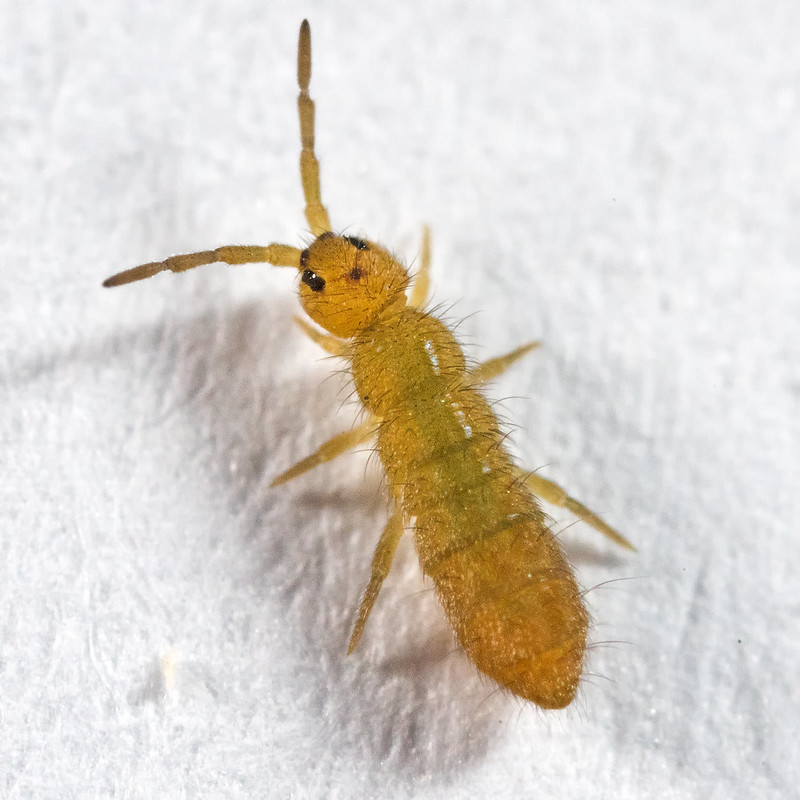
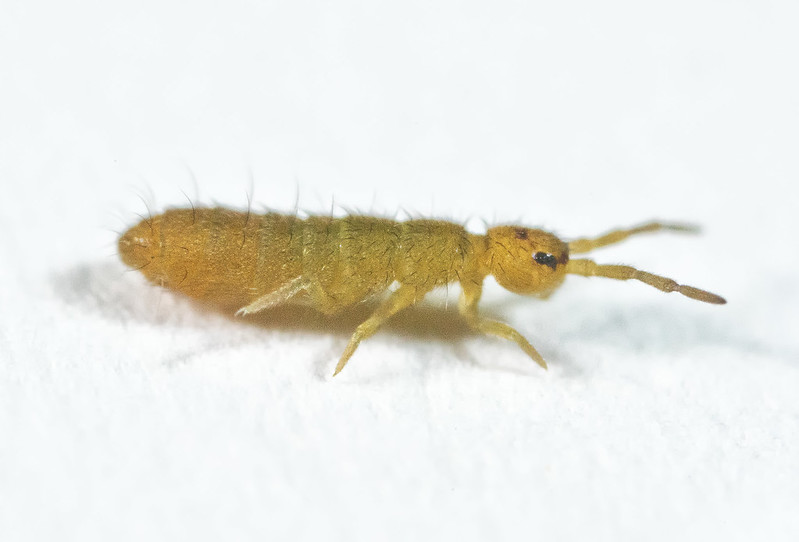
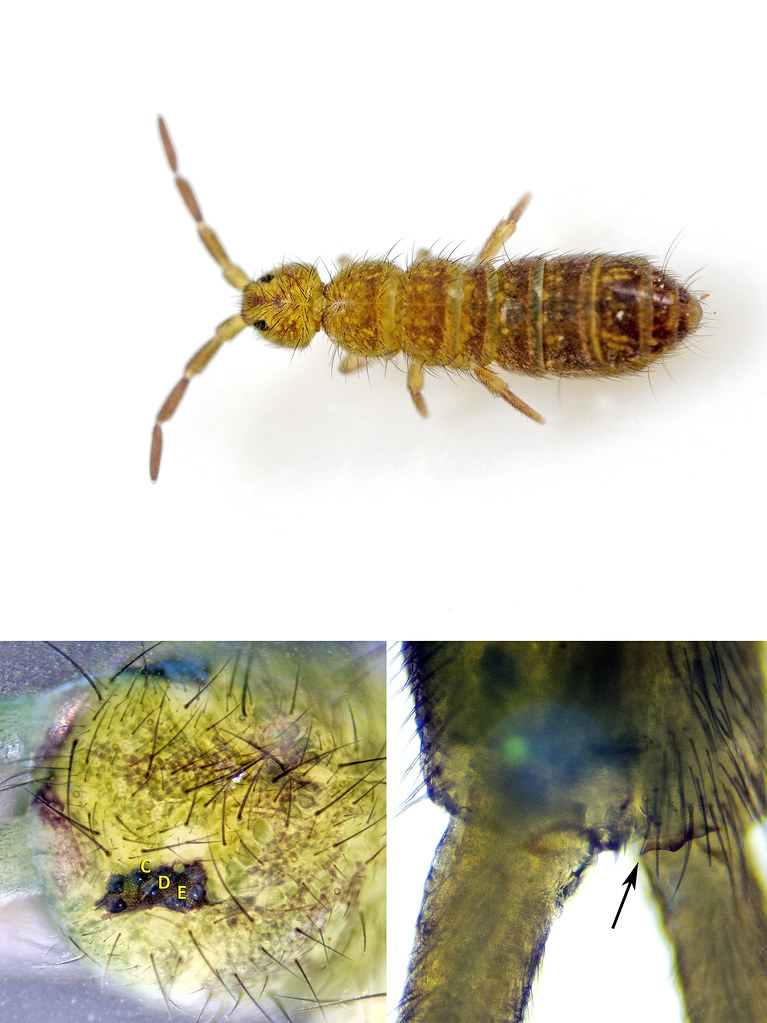
- Ocelli C-D-E aligned (= Isotoma)
- One pair of manubrial teeth
Isotoma caerulea
Small specimens are usually green, becoming more blue in large specimens. Two pairs of manubrial teeth:


The key feature which separates Isotoma anglicana/caerulea is the chaetotaxy (arrangement of bristles (setae)) on the furca (see https://www.collembola.org/publicat/isotoma.pdf). Arne Fjellberg identified two differences:
a) The macrosetae at dorsal (anterior) side of dens, near the base: I. caerulea has two, I. anglicana has three. In practice, the dens is a forest of setae from which it is difficult to pick out individual hairs:

b) The macrosetae at dorsal side of manubrium. These macrosetae are also present in juveniles – even the first instar - and are often more easily observed in them. In Isotoma anglicana, the forward bristle A is longer and thicker than the rear bristle, B; in I. caerulea this is reversed:
I. anglicana = A > B
I. caerulea = A < B
Juveniles:
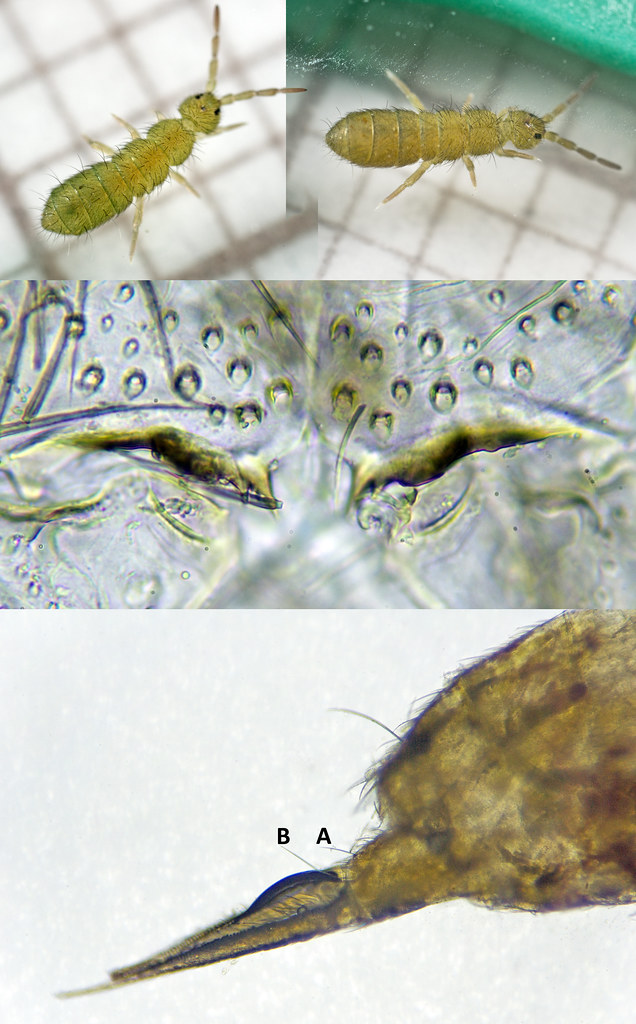

Adult (Photo Marie Huskens):
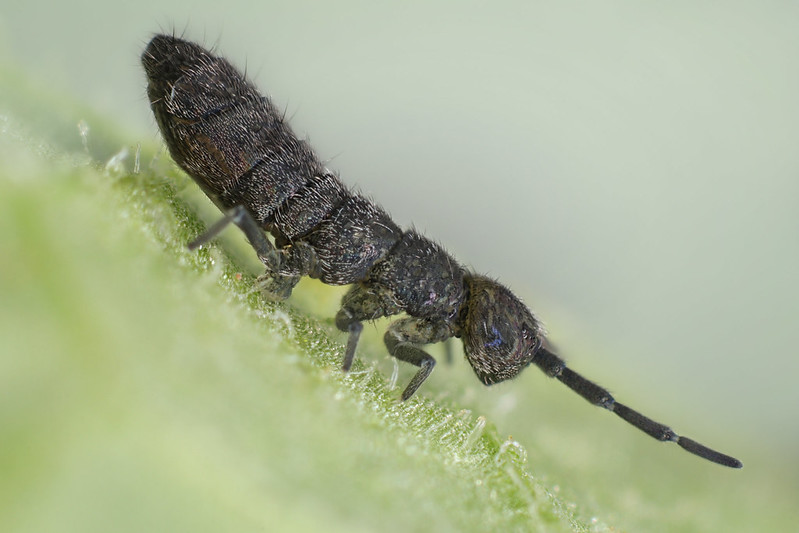
Isotoma riparia has a distinctive stripe down the middle of the body similar to Isotomurus palustris (which has more distinct lateral bands and no dark pigment between the eyes) but without trichobothria. Juveniles are a yellow colour similar to Isotomurus plumosus. One manubrial tooth. Only occurs in very wet habitats and has a distinctive stripe down the middle of the body - much like Isotomurus palustris, but without trichobothria. Photo Jan van Duinen:

Beautiful photos. May I ask how did you observe manubrial teeth? Is it has to be under certain equipment? Thank you.
ReplyDeleteThanks for your question. Those images are taken using a compound microscope, 100X magnification
Delete